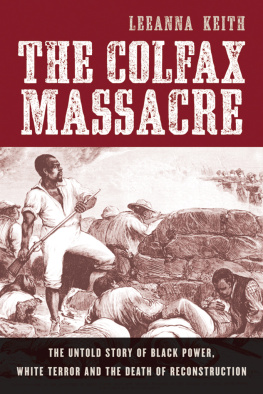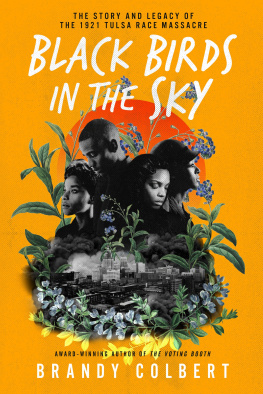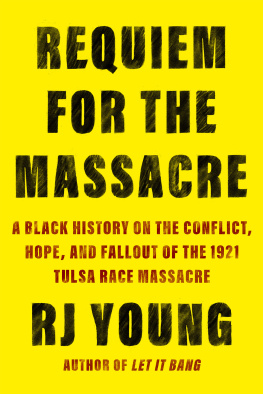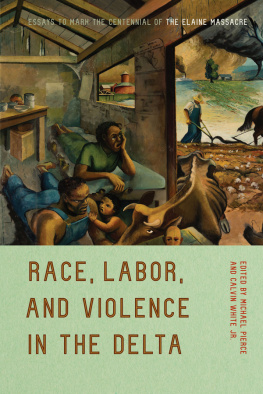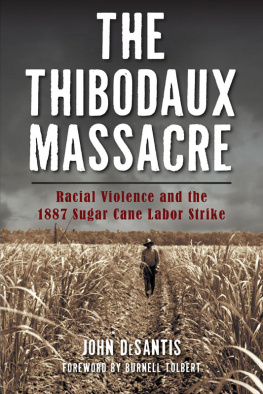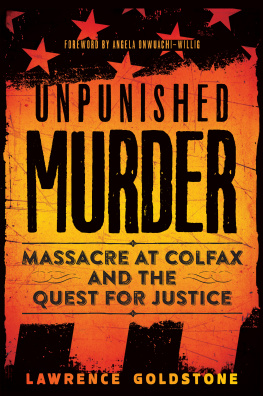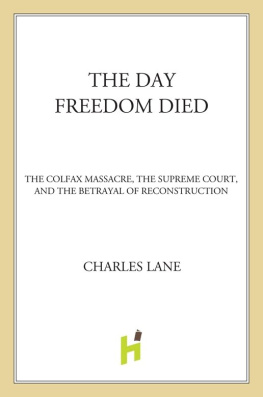The Colfax Massacre
LeeAnna Keith
The Colfax Massacre
The Untold Story of Black Power, White Terror, and the Death of Reconstruction


Oxford University Press, Inc., publishes works that further Oxford Universitys objective of excellence in research, scholarship, and education.
OxfordNew York
AucklandCape TownDar es SalaamHong KongKarachi
Kuala LumpurMadridMelbourneMexico CityNairobi
New DelhiShanghaiTaipeiToronto
With offices in
ArgentinaAustriaBrazilChileCzech RepublicFranceGreece
GuatemalaHungaryItalyJapanPolandPortugalSingapore
South KoreaSwitzerlandThailandTurkeyUkraineVietnam
Copyright 2008 by LeeAnna Keith.
Published by Oxford University Press, Inc.
198 Madison Avenue, New York, NY 10016
www.oup.com
Oxford is a registered trademark of Oxford University Press
First issued as an Oxford University Press paperback, 2009
All rights reserved. No part of this publication may be reproduced, stored in a retrieval system, or transmitted, in any form or by any means, electronic, mechanical, photocopying, recording, or otherwise, without the prior permission of Oxford University Press.
Library of Congress Cataloging-in-Publication Data
Keith, LeeAnna.
The Colfax massacre : the untold story of Black power, White terror, and the death of Reconstruction / LeeAnna Keith.
p. cm.
Includes bibliographical references and index.
ISBN 978-0-19-539308-8 (pbk.)
1. Colfax (La.)Race relationsHistory19th century. 2. Grant Parish (La.)Race relationsHistory19th century. 3. Reconstruction (U.S. history, 18651877)LouisianaColfax. 4. MassacresLouisianaColfaxHistory19th century. 5. ViolenceLouisianaColfaxHistory19th century. 6. RacismLouisianaColfaxHistory19th century. 7. African AmericansCrimes againstLouisianaColfaxHistory19th century. 8. Contested electionsLouisianaGrant ParishHistory19th century. 9. Grant Parish (La.)Politics and government19th century. I. Title.
F379.C59K45 2008
976.367dc222007023368
To Brian
All history is only one long story to this effect: men have struggled for power over their fellow men in order that they might win the joys of earth at the expense of others, and might shift the burdens of life from their own shoulders upon those of others.
William Graham Sumner
Contents
LET THE GHOSTS OF COLFAX HAVE THE FIRST WORD. THEY DO not rest in peace; their bones have been restless.
The bones rose with the flesh still intact on the third day after Easter 1873, preserved by the unseasonably cool Louisiana spring weather. Scattered like boulders across the riverbottom landscape of the town of Colfax, their bodies stirred to motion under the painstaking ministrations of government investigators. In numbers the dead dwarfed the living: the two arrivals from New Orleans, carpetbagger outsiders, assisted by a clutch of local volunteers, buried the corpses of 59 of an estimated 150 homicide victims in the vicinity of the smoking ruins of the Grant Parish Courthouse. Until Easter Sunday morning, in their company of African American militia, free and living men, the 59 had occupied a pair of shallow earthworks on the courthouse lawn, fortifications for their claim to equality and freedom on their home turf. As corpses they would occupy the loamy soil of their entrenchment forever afterward, their mass grave unmarked and the victory of their cause deferred.
The bones were moved a second time in 1899 when prospectors sunk a 1,103-foot shaft through the grave and tapped a small supply of natural gas. Speculative prospecting was not new to Central Louisiana, known as early as 1873, the year of the Colfax Massacre, to possess reserves of petroleum and its invisible by-product, made up mostly of methane. Tapping
Over the course of decades, the town uncovered bones during the excavation of the foundations of new courthouses, a highway, and a gas station with underground tanks, and the flow of water and flame from the gravesite continued uninterrupted. In 1927, the survivors among white veterans of the massacre stood by ceremonially to witness an incidental excavation and dispatched two human skulls to an exhibit of Civil War relics at Louisiana State University.
The flaming fountainfeatured in Ripleys Believe It or Not!continued to bubble and burn. Drawn by its magic, local children and at least one eccentric old man engaged in furtive splashing and bathing in the basin.
Then, one night in 1951, the unearthly effervescence of the courthouse fountain abruptly ceased. According to the local tradition, the well exhausted its supply of both water and gas without warning on the very day that the State of Louisiana installed a historical marker on the site:
On this site occurred the Colfax Riot in which three white men and 150 negroes were slain. This event on April 13, 1873 marked the end of carpetbag misrule in the South.
Superstition would trump skepticism in every surviving account of the result. Local whites built a new artificial flaming fountain and speculated on the supernatural in a series of playful, unremorseful articles in the hometown paper. Local blacks exercised a rigorous taboo about discussing the flaming fountain and the Colfax Courthouse in general, keeping silent for almost as many years as the victims of the Easter Sunday massacre had been buried in the trench below the courthouse and the sign.
Almost sixty years after it was first erected, the Colfax Riot marker remains their only headstone.
The most critical of readings must allow a certain admiation for the eloquence and power of the markers two-sentence summary. It survives as the definitive statement of the event, in part because of the reflection it offers of the state of the twentieth century and its representation of the past. In the words of author James W. Loewen, who condemned the Colfax marker in Lies Across America, historic sites are always a tale of two eras.
In fact, Colfax Riot was first used by whites to describe the events that preceded what happened at Colfax on April 13, 1873. There were other notorious riots during the era of Reconstruction, including a disproportionate number of violent confrontations in Louisiana. The grandfather of these was the 1866 New Orleans Riot, a political melee that culminated in characteristic fashion, with a pogrom of blacks, fatal casualties in the dozens, and scores of injured.
By applying the term riot to certain racial incidents, white opinion-makers struggled to adjust to the transformation of the South by Emancipation. Ascribing a tendency to riot to the freedmen, the unvanquished defenders of the Old South served notice of the deadly consequences of ideas and behavior that disrupted the antebellum status quo. In a related accommodation, criminal justice was adapted to the management of other categories of crime applied exclusively against the black population, taking care to allocate the benefits of convict labor to the masters of the local hierarchy.
By the standard of riots established as typical by the 1920s, when Wilmington, North Carolina, Rosewood, Florida, and Tulsa, Oklahoma had experienced the ordeal in full force, Colfax 1873 was not properly a riot, after all. In light of the high state of military preparedness in the all-black courthouse defense, the confrontation better approximated a battle. Remembering it as the Colfax Riot revealed the white will to maintain order.

